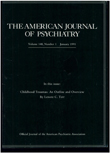The UCLA-University of Utah epidemiologic survey of autism: prevalence
Abstract
The authors conducted an epidemiologic survey in Utah using a four- level ascertainment system, blind current diagnostic assessments, and DSM-III criteria. Of 483 individuals ascertained, 241 were diagnosed as having autism. The best estimate for the prevalence rate was 4 per 10,000 population. Autism was not associated with parental education, occupation, racial origin, or religion. Sixty-six percent of the autistic subjects scored below 70 on standardized IQ tests, and females scored proportionately lower than males. Twenty (9.7%) of 207 families had more than one autistic sibling, which supports the authors' previous finding that there may be a familial subtype of autism.
Access content
To read the fulltext, please use one of the options below to sign in or purchase access.- Personal login
- Institutional Login
- Sign in via OpenAthens
- Register for access
-
Please login/register if you wish to pair your device and check access availability.
Not a subscriber?
PsychiatryOnline subscription options offer access to the DSM-5 library, books, journals, CME, and patient resources. This all-in-one virtual library provides psychiatrists and mental health professionals with key resources for diagnosis, treatment, research, and professional development.
Need more help? PsychiatryOnline Customer Service may be reached by emailing [email protected] or by calling 800-368-5777 (in the U.S.) or 703-907-7322 (outside the U.S.).



